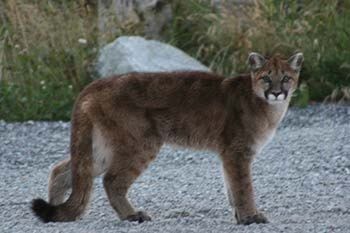Deer use their senses to adapt to their environment and keep them alive and thriving. We previously explored their keen sense of smell, identifying ways we can use that attribute to our advantage. Adopting several rotating deterrent options, directed at disturbing one or more of the senses works best.
Hearing: Sharp loud noises can startle deer, and repeated use of different sounds at different times can move the deer away from a regular stroll through your yard. Pop cans filled with rocks, small air horns (depending on your neighbours), bells and I’ve even heard of folks using prey animal noises. A well trained dog that runs out and barks a couple of times, can be effective, but I caution in areas where deer have already moved in and are resident they may become aggressive towards the dog.
Sight: Flashing streamers on ‘favourite plants’, a menacing looking dog, a shot of water on a laser sensor can help deter the deer from loitering. Hanging streamers along the top rail of your fence, or on a flat galvanized wire that is higher than your fence or cantilevered out, are very effective in stopping deer from jumping over into the yard.
Taste: Links for spray-on recipes;http://gardening.yardener.com/Repelling-Deer
http://new.wildaboutgardening.org/en/features/section3/deer/deterrents.htm
http://www.savvyhousekeeping.com/using-plants-to-deter-deer/
The smell of these taste deterrents can also deter humans from enjoying the gardens, so proceed with caution using these strategies.
Touch: Providing ‘feel’ deterrents can be a bit more of a challenge. Jets of water, as described above are terrific. They surprise the deer and the feel of water is disturbing. A jet of water from a garden hose - held by the homeowner is good too. Make sure you are in a safe location and give a quick few spurts at the body of the deer, avoiding the face and eyes. Consider strategy; aim the spray stream (up under the tail) when the deer is facing a safe way out of your yard.
Rotating deterrents are most effective when the neighbourhood is on board. Community members need to understand that harbouring and or feeding deer (any wildlife) is contributing to the increasing assertive/aggressive deer situations. It’s easier for us to comprehend that bears, coyotes and cougars are ‘wildlife’ but deer (ungulates) are too.
Feeding wildlife or encouraging them to live in our urban communities can have negative impacts on the animals; either by the need for Conservation Officers to destroy them - after a negative encounter with a human(s), by providing them un-natural food sources which their guts aren’t really meant to digest and providing the larger predators a ready source of food. Deer also carry ticks which are linked to Lyme disease.
Zoe Kirk
RDOS Bear Aware/WildSafeBC Community Coordinator
